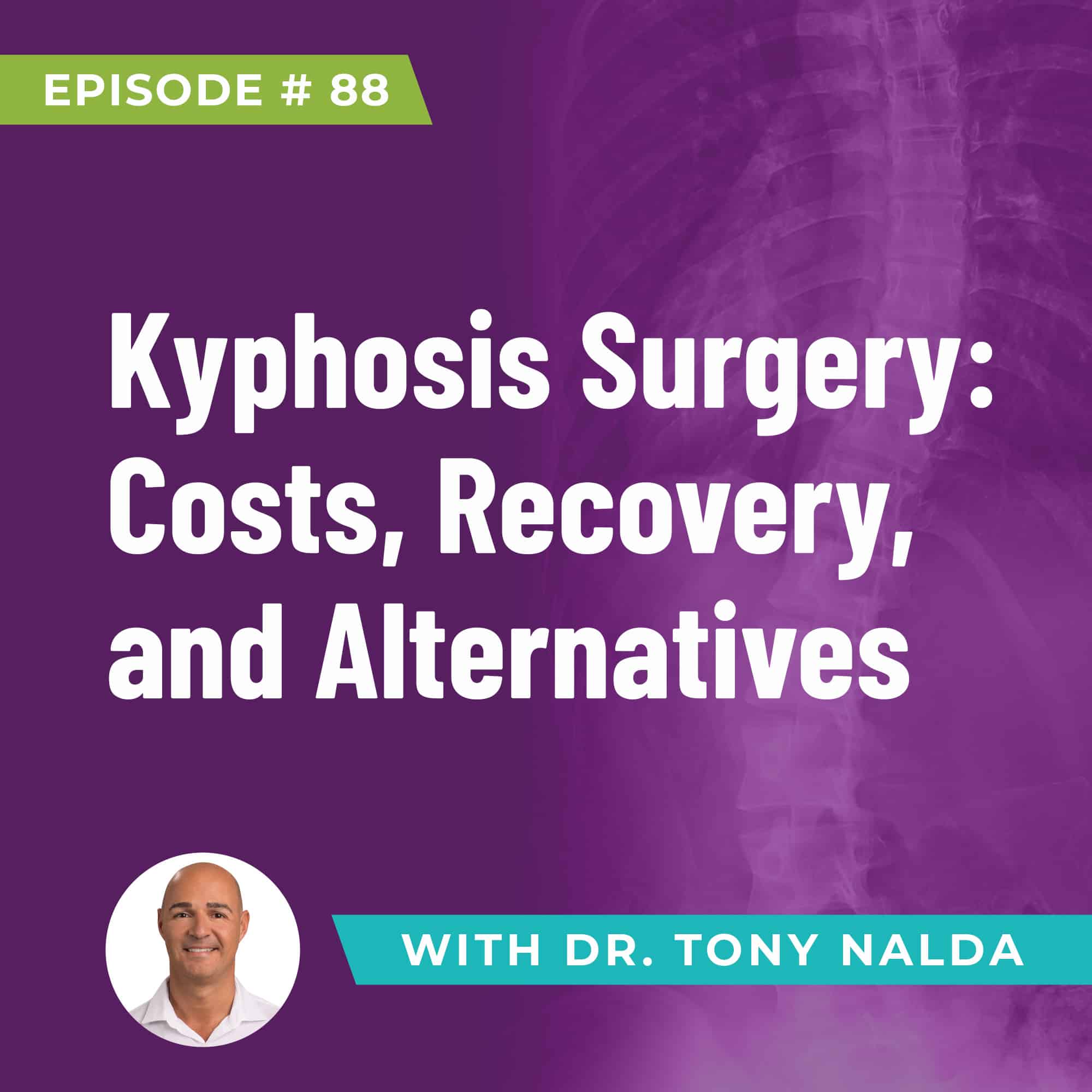Episode 88: Kyphosis Surgery: Costs, Recovery, and Alternatives
Today, Dr. Tony Nalda delves into the definition of kyphosis, its symptoms, and the surgical solution, and explores non-surgical alternatives.
What is Kyphosis?
Kyphosis is a spinal curvature that, when viewed from the side, exhibits a backward bend away from the center of the body. While there are normal ranges for kyphosis, hyperkyphosis occurs when the thoracic spine's curvature extends beyond the typical 40-degree range.
Symptoms of Kyphosis include excessive rounding of the upper back and shoulders, often referred to as a "round back" or "hunched back." This condition affects posture, with boys more commonly affected than girls. Kyphosis can result from various factors such as poor ergonomics, injuries, or a non-maintained spine due to prolonged periods of sitting.
Surgical Intervention for Kyphosis
When kyphosis progresses to a severe stage, surgery may be recommended. This is invasive, involving the use of rods, screws, and bone grafts to perform spinal fusion. The goal is to prevent further kyphosis and restore the spine's alignment, though he cautions about potential risks, including loss of spinal function.
The financial aspect of kyphosis surgery is a significant consideration, with an estimated cost ranging from $140,000 to $200,000, depending on complications and individual cases.
At the Scoliosis Reduction Center, patients are encouraged to have a proactive approach to kyphosis treatment, emphasizing the benefits of non-surgical options. These alternatives include chiropractic care, therapy exercises, and corrective bracing.
The advantages of non-surgical treatments include:
- Cost-Effectiveness - non-surgical treatments are generally less costly compared to surgical interventions.
- Less Invasiveness - non-surgical approaches are less invasive, avoiding the need for rods, screws, and bone grafts used in surgical interventions.
- Preservation of Spine Health and Function - non-surgical options aim to restore function naturally while maintaining flexibility.
- Natural Form of Treatment - promotes a more holistic approach to spinal health.
- Fewer Adverse Side Effects - the natural and customized nature of these treatments can minimize risks
- Improvement in Function and Posture - aim to improve spinal function, reduce pain, and enhance posture.
There is still hope in these confusing times. Understanding kyphosis and its treatment options is vital for individuals facing this condition. If you want to know more about non-surgical alternatives listen to Dr.Tony Nalda’s podcast.
Artlist.io 847544
Podcast: Play in new window | Download
Subscribe: RSS
Dr. Tony Nalda
DOCTOR OF CHIROPRACTIC
After receiving an undergraduate degree in psychology and his Doctorate of Chiropractic from Life University, Dr. Nalda settled in Celebration, Florida and proceeded to build one of Central Florida’s most successful chiropractic clinics.
His experience with patients suffering from scoliosis, and the confusion and frustration they faced, led him to seek a specialty in scoliosis care. In 2006 he completed his Intensive Care Certification from CLEAR Institute, a leading scoliosis educational and certification center.
About Dr. Tony Nalda
 Ready to explore scoliosis treatment? Contact Us Now
Ready to explore scoliosis treatment? Contact Us Now








